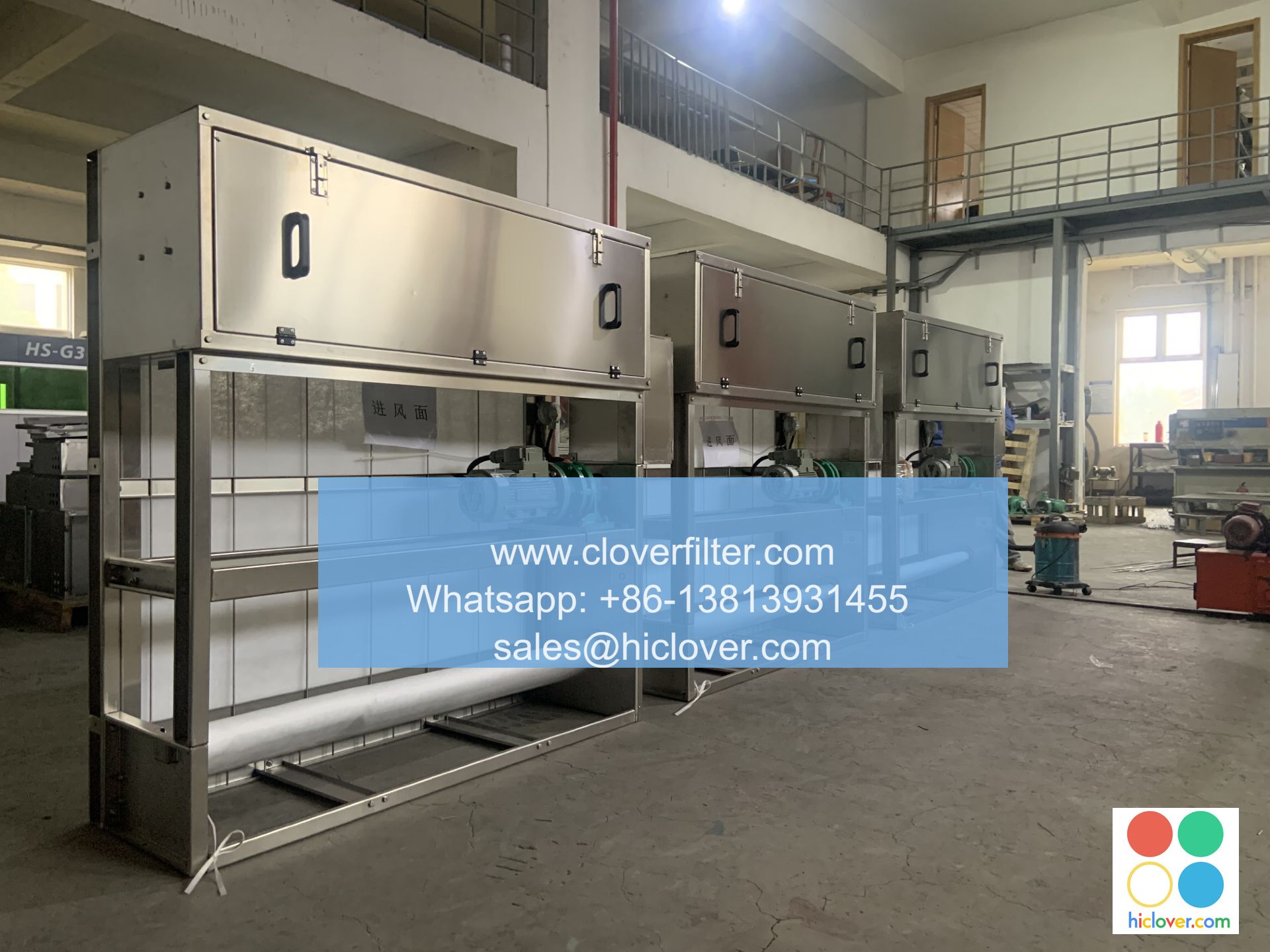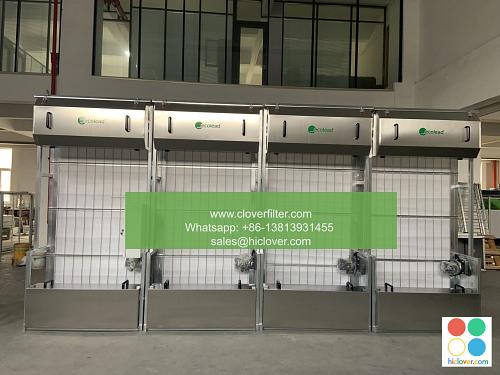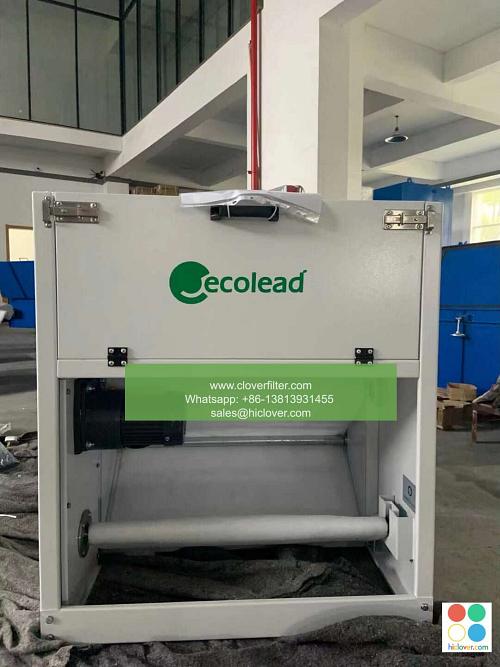Automatic Roll Air Filters in Ontario Cleanrooms: A Review of Industry Standards and Regulations

In Ontario, cleanrooms play a critical role in various industries such as pharmaceuticals, biotechnology, and electronics. The primary objective of these controlled environments is to minimize contamination and ensure the quality of products. One of the essential components in maintaining the cleanliness of these spaces is the air filtration system. Automatic roll air filters have gained popularity in recent years due to their efficiency and cost-effectiveness. This article aims to provide a comprehensive review of industry standards and regulations surrounding the use of automatic roll air filters in Ontario cleanrooms.
The Ontario government has established strict guidelines and regulations for cleanrooms to ensure compliance with international standards. The Canadian Standards Association (CSA) and the International Organization for Standardization (ISO) provide the framework for cleanroom design, construction, and operation. When it comes to air filtration, the CSA recommends the use of HEPA (High Efficiency Particulate Air) filters, which are capable of removing 99.97% of particles as small as 0.3 microns. Automatic roll air filters are designed to meet these standards, providing a continuous supply of clean air to the cleanroom.
Industry standards for automatic roll air filters in Ontario cleanrooms are based on the ISO 14644-1:2015 standard, which classifies cleanrooms into different categories based on the level of airborne contamination. The standard requires cleanrooms to maintain a specific level of air cleanliness, which is achieved through the use of air filtration systems. Automatic roll air filters are designed to provide a high level of air cleanliness, making them suitable for use in cleanrooms that require strict control over airborne contamination.
The Ontario Ministry of Labour, Training and Skills Development regulates the use of automatic roll air filters in cleanrooms through the Occupational Health and Safety Act (OHSA). The act requires employers to provide a safe working environment for employees, which includes maintaining good indoor air quality. Automatic roll air filters play a critical role in achieving this objective by removing airborne contaminants and providing a clean and healthy working environment.
In addition to government regulations, industry-specific standards and guidelines also apply to the use of automatic roll air filters in Ontario cleanrooms. For example, the pharmaceutical industry is regulated by the Good Manufacturing Practice (GMP) guidelines, which require the use of air filtration systems that meet specific standards. Automatic roll air filters are designed to meet these standards, providing a high level of air cleanliness and minimizing the risk of contamination.
The benefits of using automatic roll air filters in Ontario cleanrooms are numerous. They provide a continuous supply of clean air, minimizing the risk of contamination and ensuring the quality of products. They are also cost-effective, requiring less maintenance and replacement compared to traditional air filtration systems. Furthermore, automatic roll air filters are designed to provide a high level of air cleanliness, making them suitable for use in cleanrooms that require strict control over airborne contamination.
Despite the benefits of automatic roll air filters, there are also challenges associated with their use. One of the main challenges is ensuring that the filters are properly installed, maintained, and replaced. This requires specialized training and equipment, which can be a significant investment for cleanroom operators. Additionally, automatic roll air filters require regular monitoring and testing to ensure that they are functioning correctly, which can be time-consuming and costly.
In conclusion, automatic roll air filters play a critical role in maintaining the cleanliness of Ontario cleanrooms. They are designed to meet industry standards and regulations, providing a high level of air cleanliness and minimizing the risk of contamination. While there are challenges associated with their use, the benefits of automatic roll air filters make them a valuable component of any cleanroom air filtration system.
Conclusion
In summary, automatic roll air filters are a crucial component of Ontario cleanrooms, providing a continuous supply of clean air and minimizing the risk of contamination. By understanding the industry standards and regulations surrounding their use, cleanroom operators can ensure compliance and maintain the quality of their products. As the demand for cleanrooms continues to grow, the use of automatic roll air filters is likely to become even more widespread, playing a critical role in maintaining the cleanliness and quality of products in various industries.
FAQs
Q: What are the benefits of using automatic roll air filters in Ontario cleanrooms?
A: The benefits of using automatic roll air filters include providing a continuous supply of clean air, minimizing the risk of contamination, and being cost-effective.
Q: What industry standards and regulations apply to the use of automatic roll air filters in Ontario cleanrooms?
A: The Canadian Standards Association (CSA) and the International Organization for Standardization (ISO) provide the framework for cleanroom design, construction, and operation. The Ontario Ministry of Labour, Training and Skills Development regulates the use of automatic roll air filters in cleanrooms through the Occupational Health and Safety Act (OHSA).
Q: What are the challenges associated with the use of automatic roll air filters in Ontario cleanrooms?
A: The challenges associated with the use of automatic roll air filters include ensuring proper installation, maintenance, and replacement, as well as regular monitoring and testing to ensure correct functioning.
Q: Are automatic roll air filters suitable for use in all types of cleanrooms?
A: Automatic roll air filters are suitable for use in cleanrooms that require strict control over airborne contamination, but may not be suitable for all types of cleanrooms. The specific requirements of the cleanroom will determine the type of air filtration system needed.


